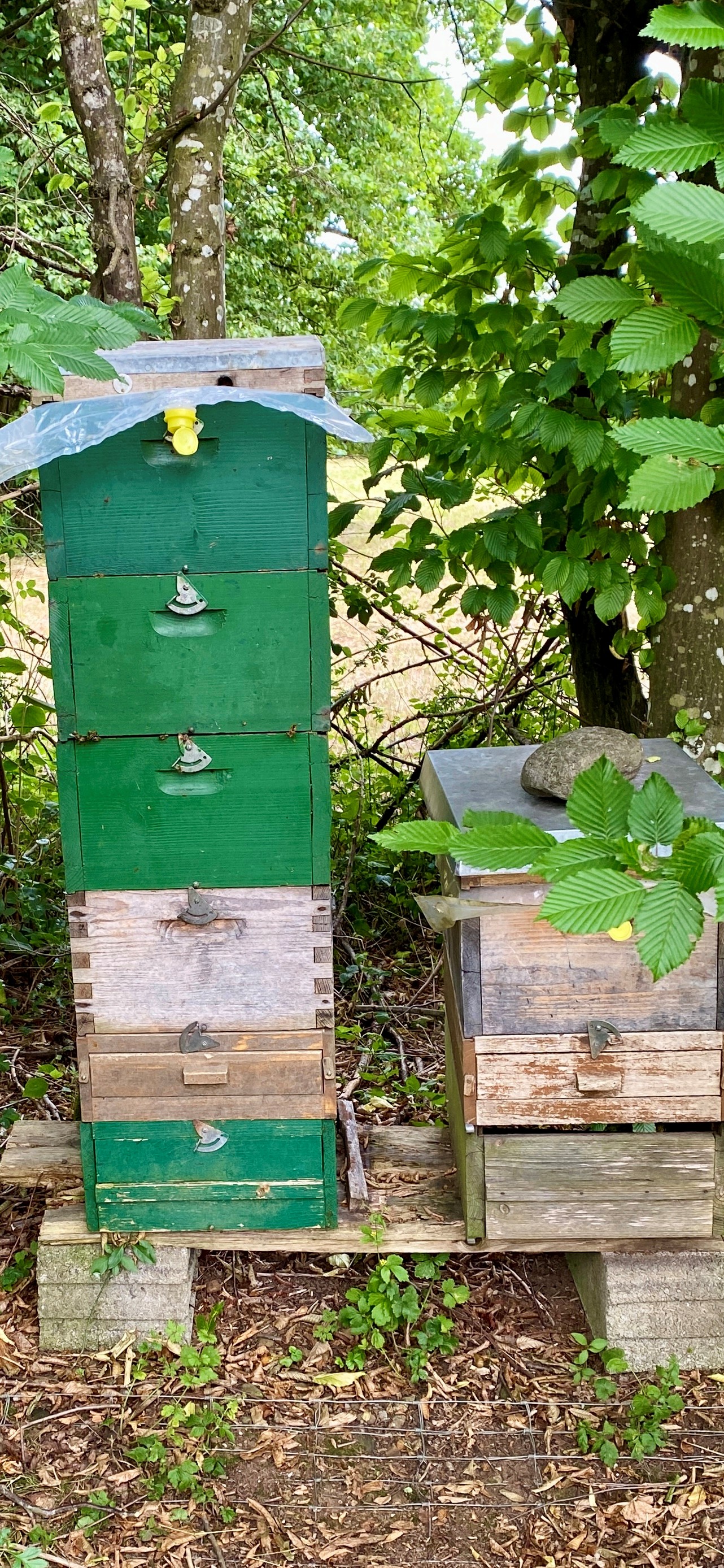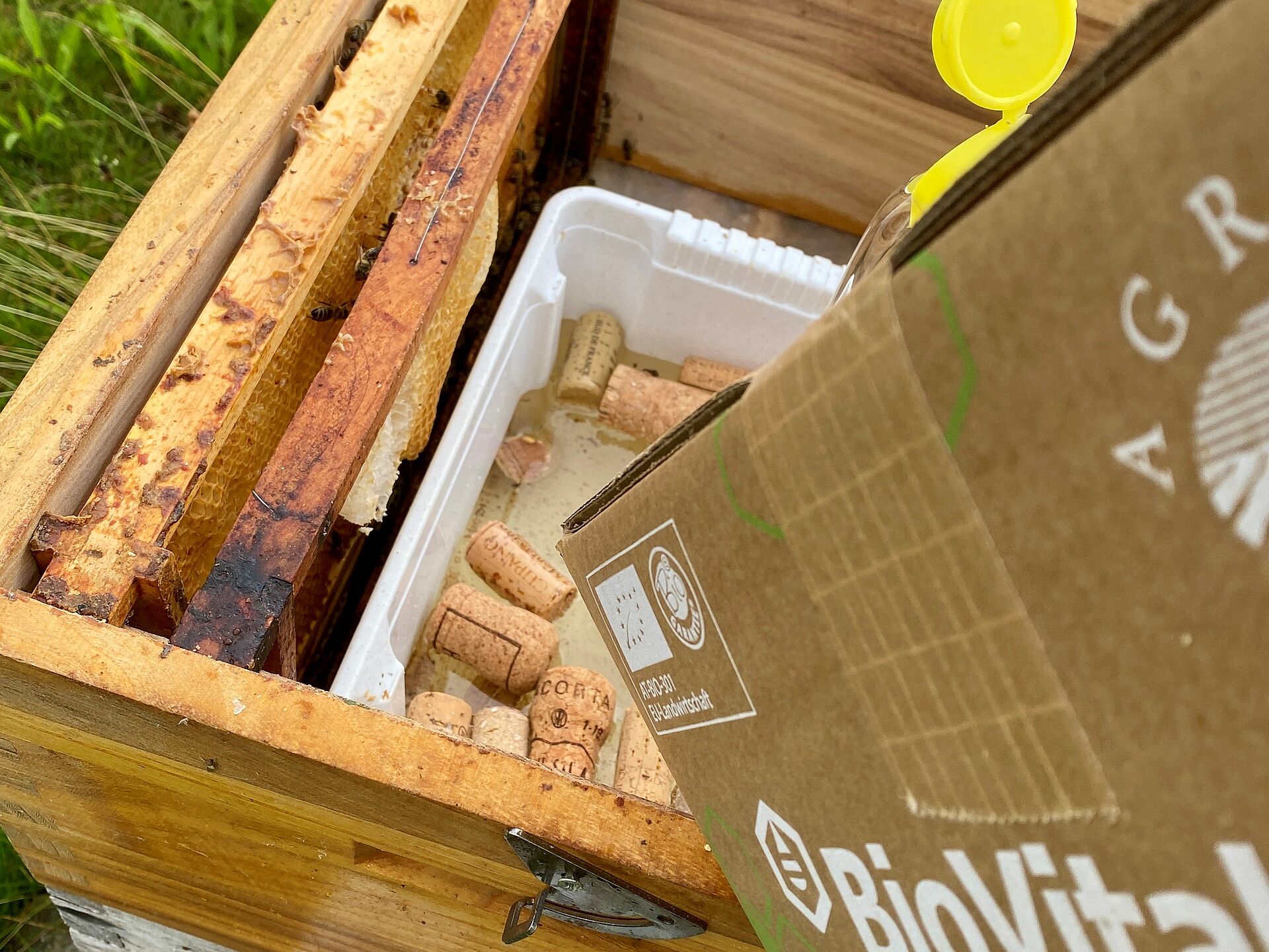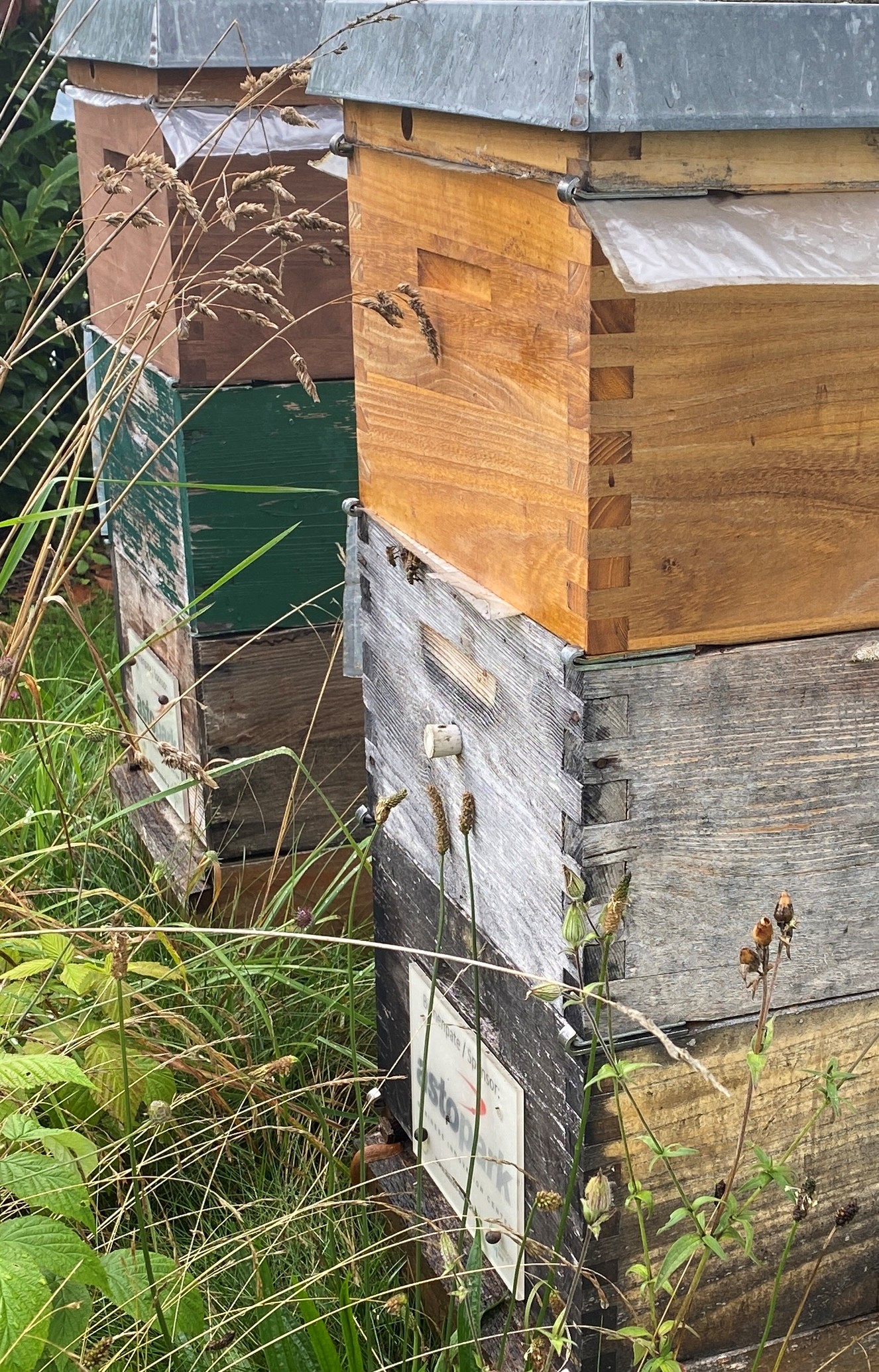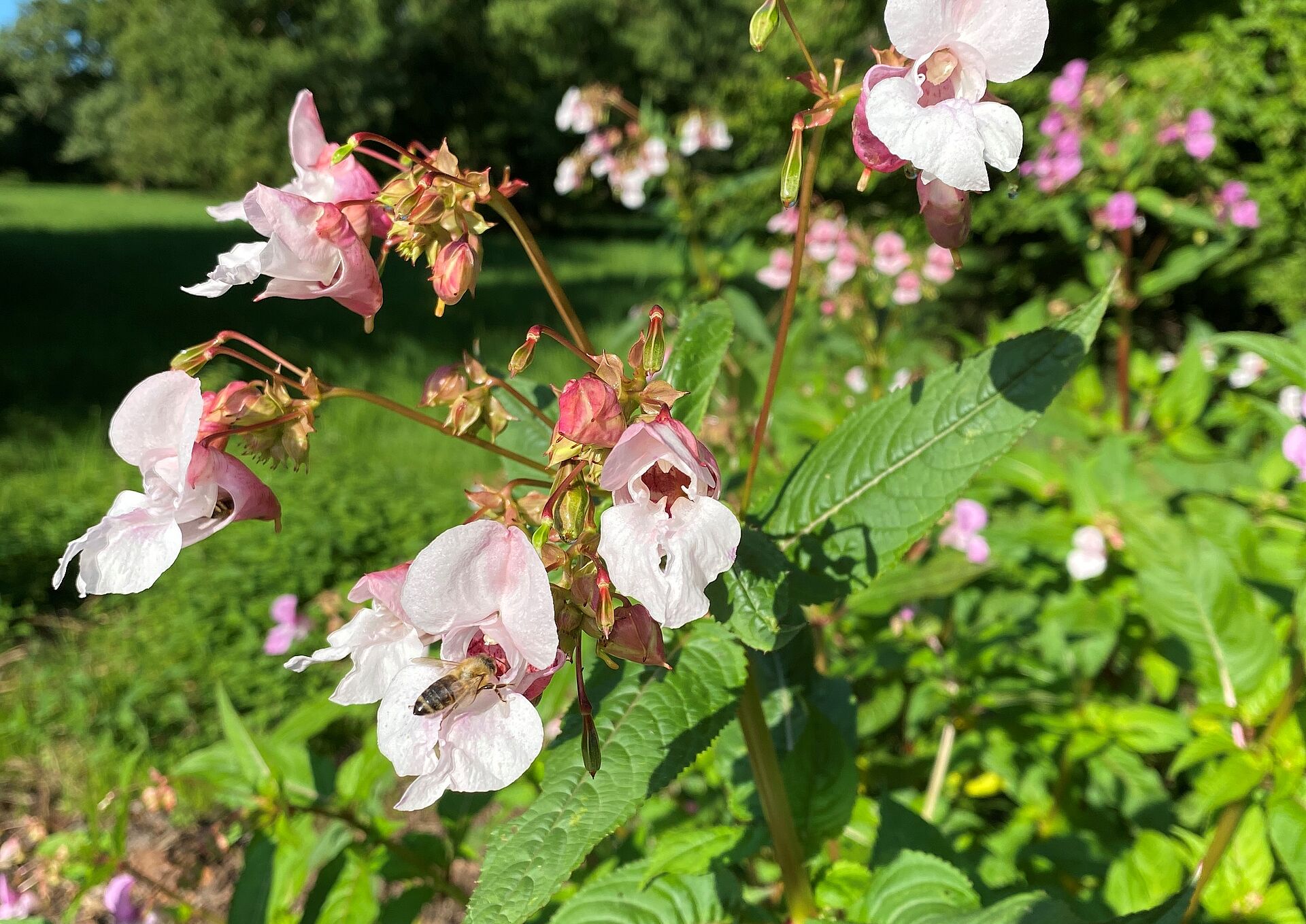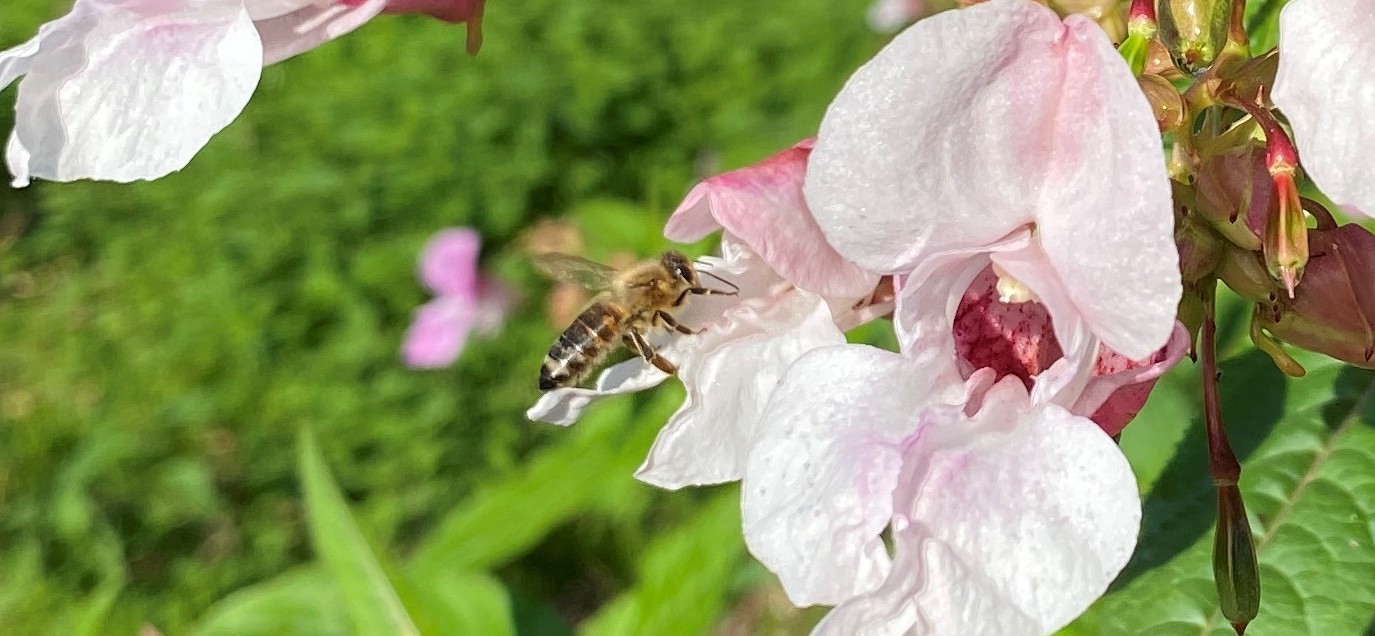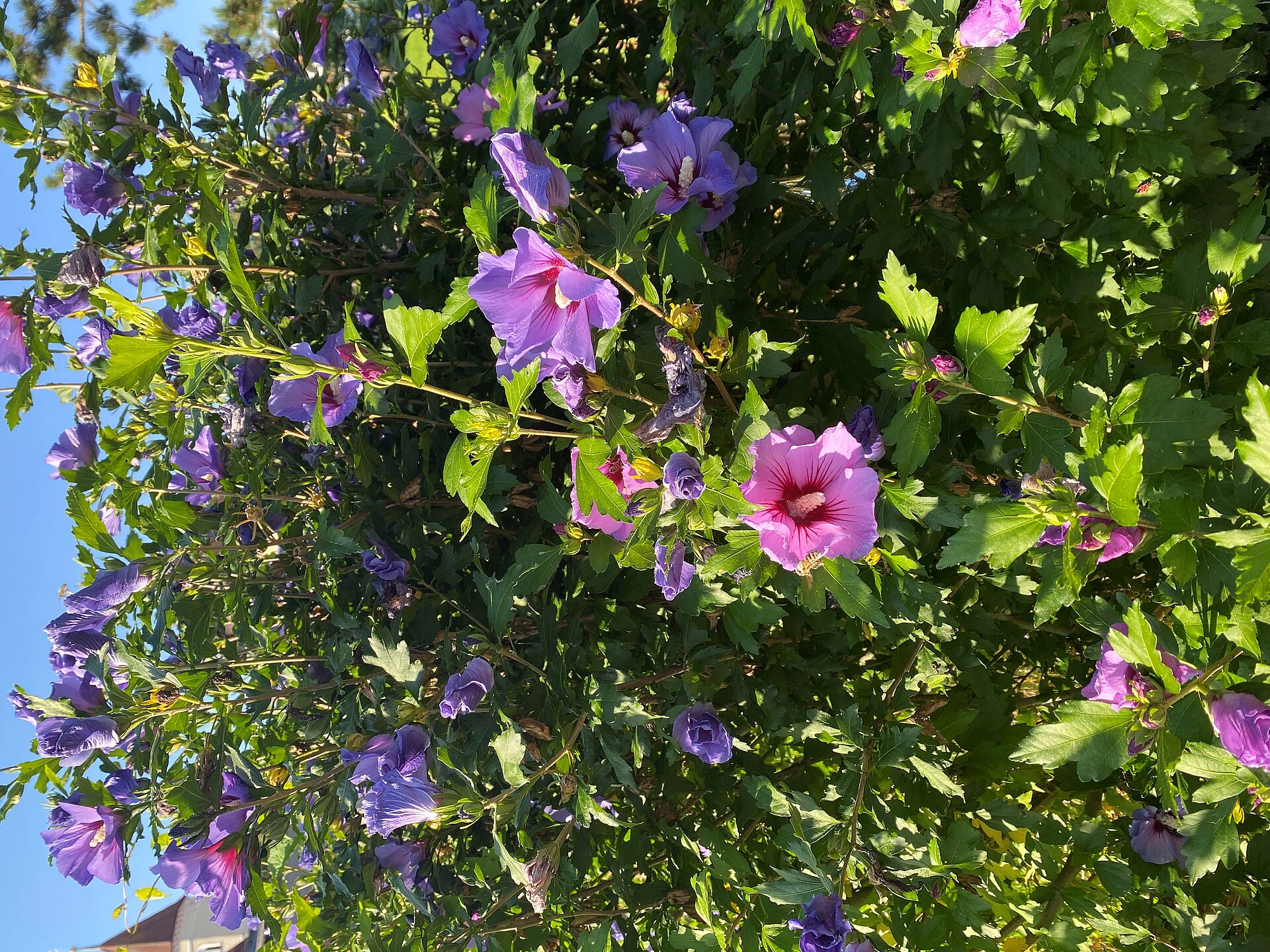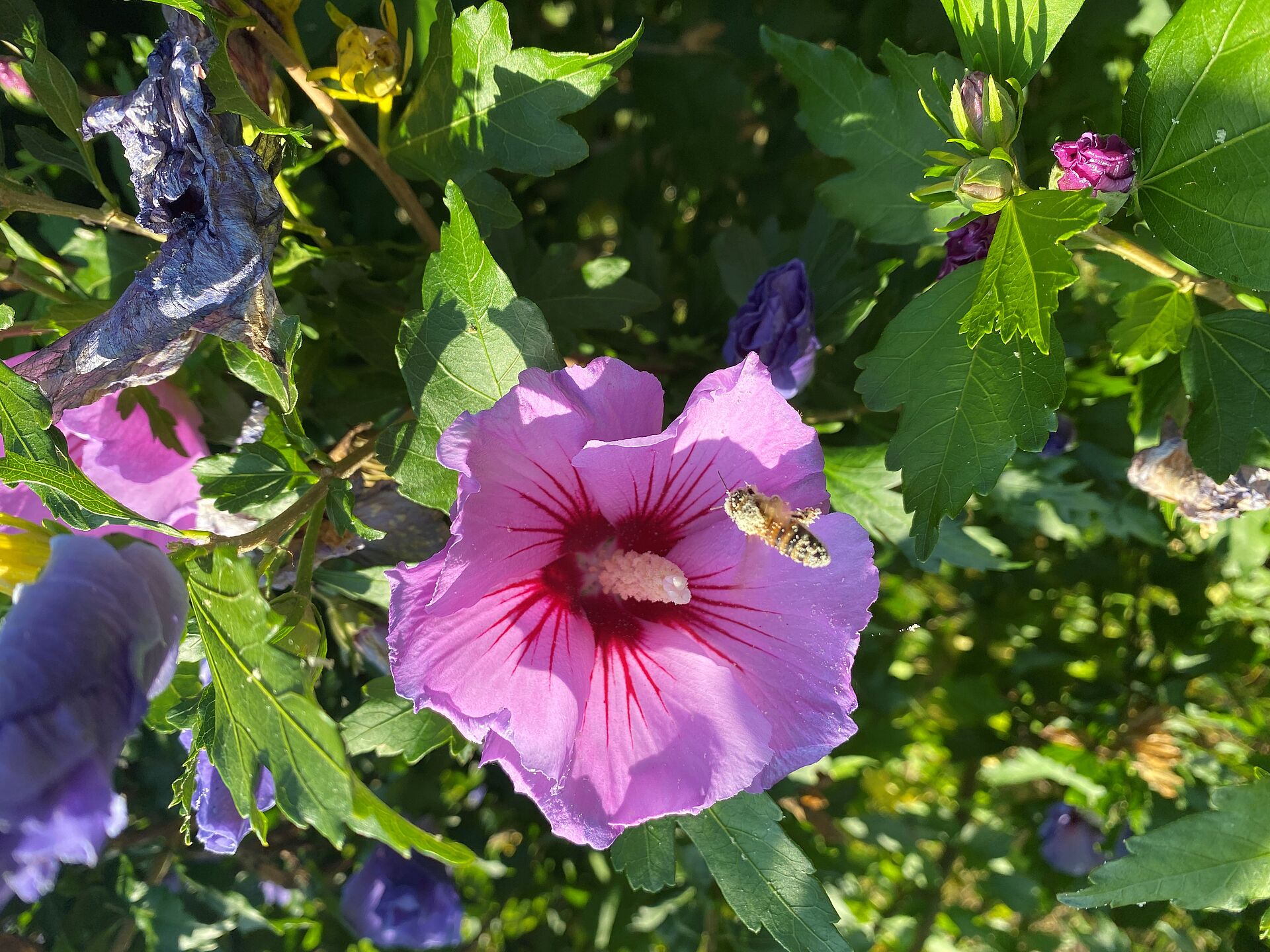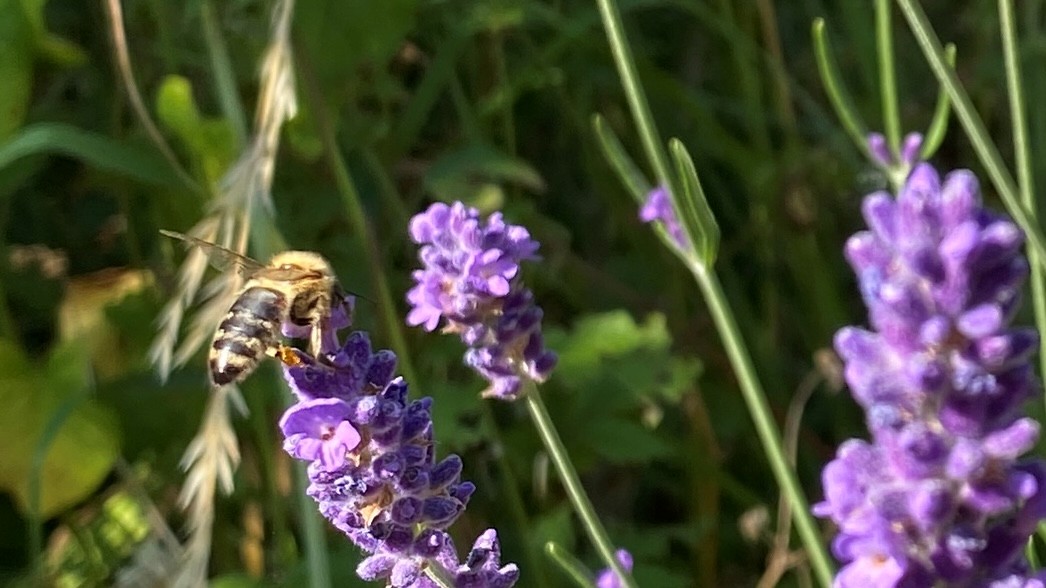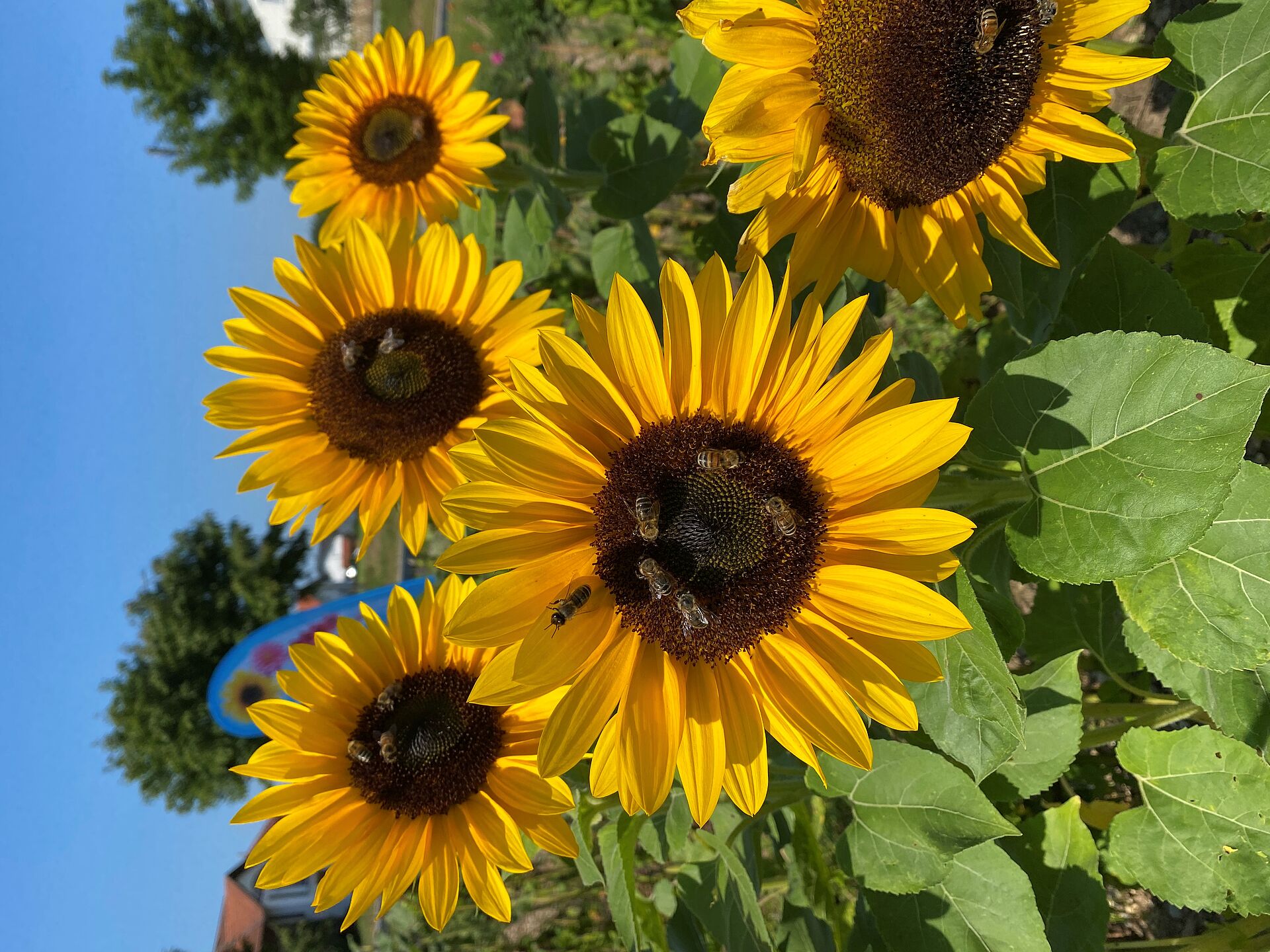Newsletter August:
Der Regionaltag 2025 war ein Erfolg
Dear bee enthusiasts,
The first regional day of “StarnbergAmmersee” was a lot of fun. It was a great opportunity to make new contacts with other regional partners and raise awareness of the bees in our region. The district administrator also visited our beekeeping stand, which I looked after together with the board of the Starnberg Beekeeping Association, and was impressed by our local honey varieties.
In the meantime, I have also harvested the summer honey and freed the commercial colonies from most of the Varroa mites by completely removing the brood. I was able to harvest a beautiful summer honey, mainly from linden blossom and honeydew or forest, of the highest quality. In addition to taste, good quality means above all a water content of less than 18%.
According to honey regulations, honey may have a maximum water content of 20%, which means that the bees must dry the nectar they collect, which has a water content of 80%, in the hive by fanning it at the flight hole and repeatedly transferring it to the cells. Only then is a thin layer of wax applied to the honey cells and the honey is ripe and ready for storage.
However, due to the dry weather, the yield was once again below average. This year, I harvested an average of about 5 kg of honey per colony from both spring blossom honey and summer honey. It's a good thing I don't have to make a living from beekeeping – it's a shame I couldn't make a living from it.
I'm sure you've also seen the “Frontal” report on syrups from China being sold as honey. So keep your eyes open when buying food.
When harvesting the honey, I also removed the capped brood from the colonies, as this is where most of the Varroa mites are found. I used these combs and some bees to create a so-called brood barn. In addition to a new queen, the young bees hatched in it and formed a new colony, which is, however, heavily infested with mites. In order to avoid using chemicals or acids, I remove the first capped brood with the majority of the mites and melt it down after briefly freezing it.
On the left is the brood barn – a tower with the brood combs of the older colonies – for removing the Varroa mites from the colonies.
After the last honey harvest, the colonies must be fed with sugar water, even if they still have honey stored. This encourages the bees to build new combs and the queen to lay eggs. This promotes the development of many new, healthy winter bees.

